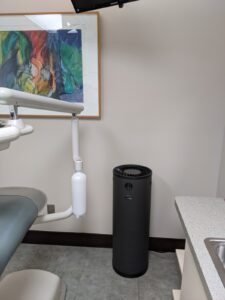What Exactly Are Dental Implants?
Before implants, dentures and other dental prosthetics relied on adhesives, hidden clasps, and (in the case of bridges) adjacent, healthy, but modified teeth for support. Although highly-effective at refilling empty spaces in smiles, conventional replacement teeth can only replace the visible parts of lost teeth. Only dental implants offer a solution for rebuilding the whole tooth, including the roots that were once embedded within your jawbone.
Dental implants often refer to the small, root-like titanium posts that are implanted into the jawbone in place of lost roots. The implants’ main purpose is to support a dental crown, bridge, partial, or complete denture with unmatched stability compared to traditional replacement teeth.
The History of Implant Dentistry
Although dental implants didn’t become a routine part of dentistry until the 1970s, the principles that make it possible were discovered decades earlier. In the early 1950s, Swedish physician and scientist, Dr. Per-Ingvar Brånemark, and his team, accidentally discovered that titanium is biocompatible. To study blood flow in the body, the doctor and his team used implanted titanium tubes in the femurs of mice. At the study’s conclusion, Dr. Brånemark and his team were unable to extract the tubes because they had become a part of the bones’ anatomy (a process they would dub “osseointegration”).
After several years of investigation, and several more spent turning the results into usable technology, experts agreed that osseointegration made titanium dental implants a highly-effective option for replacing lost roots. Since then, dental implants have proven their worth over and over again, boasting a 98 percent success rate worldwide.
What Dental Implants Are Made Of
Dental implant-supported prosthetics consist of three main parts: the implant post(s), the connective abutment(s), and the appropriate restoration (i.e., crown, bridge, or denture).
1. Implant Post
An implant post is the titanium prosthetic root that is surgically placed into the jawbone. Each post is designed and positioned to absorb a maximum amount of pressure, so if you’ve lost more than one tooth, then you may not need a post for every lost tooth root. Once the post has been placed, healing should take 4-6 months, during which time the jawbone will fuse to the titanium implant post(s).
2. Connective Abutment
After your jawbone has healed from implant placement surgery, Dr. Stewart will attach a connective abutment to each post. The abutment is placed securely into the implant underneath the gums and extends above the gum line. The top portion of the abutment(s) can then be used to securely fasten your crown, bridge, partial, or complete denture to the implant post(s).
3. Implant Restoration
Once your implant post(s) and connective abutment(s) are secured into place, Dr. Stewart will complete your procedure by attaching your appropriate, custom-designed prosthesis. If you’ve lost a single tooth, then a single implant and abutment will be topped with a lifelike dental crown. If you are missing several teeth, then one or more implant posts can support a bridge or partial denture. Patients who experience complete tooth loss (edentulism) can support a complete upper or lower denture on a series of dental implant posts. In fact, with All-On-4™ dentures, you only need four implant posts per complete denture!



